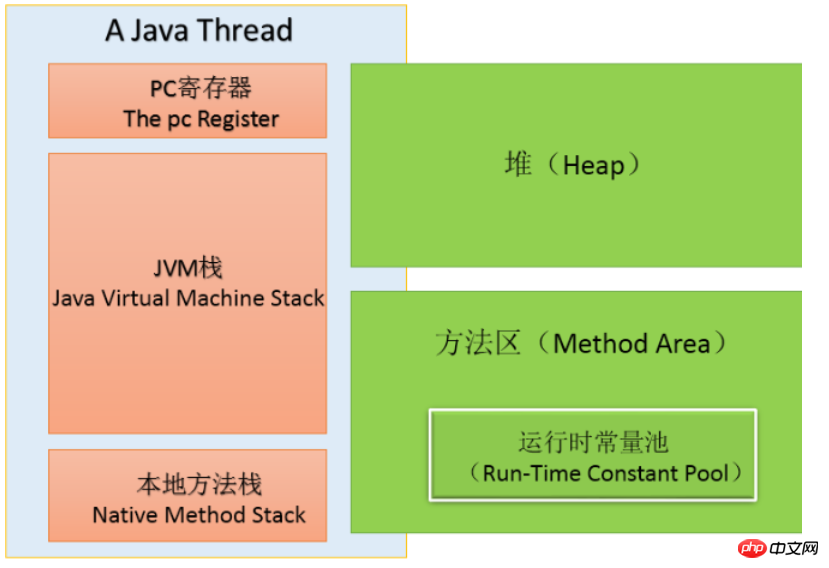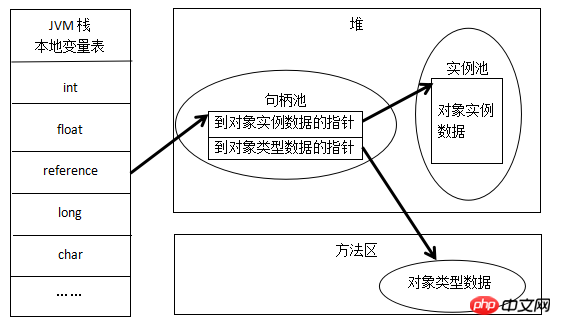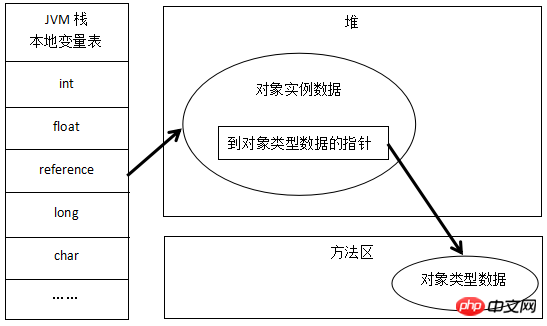 Java
Java
 javaTutorial
javaTutorial
 Detailed explanation of Java memory management and memory overflow exceptions
Detailed explanation of Java memory management and memory overflow exceptions
Detailed explanation of Java memory management and memory overflow exceptions
The following editor will bring you a brief discussion of java memory management and memory overflow exceptions. The editor thinks it is quite good, so I will share it with you now and give it as a reference for everyone. Let’s follow the editor and take a look.
Speaking of memory management, the author would like to first compare the differences between Java, C and C++:
In C and C++, memory management is the responsibility of programmers, which means that programmers have to complete heavy code writing work and always consider the maintenance of system memory
In java, Programmers do not need to consider memory control and maintenance, but let the JVM automatically manage it, so that memory leaks and overflow problems are less likely to occur. However, once problems with memory leaks and overflows occur, it is difficult to find the error without understanding the JVM's memory management mechanism.
1. JVM runtime data area
When the JVM runs a java program, it will divide the memory it manages into several different Areas, these areas not only have their own purposes, but also have time for creation and destruction. Generally speaking, it contains the following runtime data areas:

The orange area is private to each thread, that is, each thread will have its own copy, and the green area The area is shared by each thread.
2.Creation of java objects

Class loading check
When the JVM scans the new keyword, it will first check whether the parameters of this instruction can locate a symbolic reference of a class in the constant pool, and check whether the class represented by the symbolic reference of this class has been loaded. Parsed and initialized. If not, the corresponding class loading process must be performed first.
Memory allocation
When the class loading check passes, the JVM needs to allocate memory for the new object, that is, divide a memory of a certain size from the java heap. There are two commonly used division methods: Pointer collision (the heap memory is required to be absolutely regular), free list (the heap memory is not regular).
Memory initialization
The JVM needs to initialize all allocated memory spaces to zero values (excluding object headers), which ensures that the instance fields of the object are in java The code can be used directly without assigning initial values, which means that the program can access the zero value corresponding to the data type of these fields.
Object initialization
Execute the
3. Object access positioning
After the objects are created, we also hope to access these objects quickly, which requires JVM The reference data on the stack is used to find the specific object in the heap. Currently, the most commonly used access methods are "handle method" and "direct pointer".
If you use the handle method to access, you need to divide a part of the memory in the heap as a handle pool. The reference variable stores the handle address of the object, and the handle contains the specific details of the object instance data and type data. Address information.

If you use direct pointer access, what is stored in the reference variable is directly the object address, but you need to consider how to place the relevant information of the type data.

4. Memory overflow exception
In addition to the PC register, the JVM runtime data area has other Memory overflow exceptions may occur in any memory area. The PC register is the only area that does not specify any OutOfMemoryError (OOM) conditions in the JVM specification.
Heap overflow
The heap in java is used to store object instances. If objects are continuously created, and there is a reachable path between GC Roots and the object to avoid GC recycling processing, then a heap overflow exception will occur after the number of objects reaches the maximum heap capacity limit.
Stack overflow (including JVM stack and local method stack)
1. If the stack depth requested by the thread is greater than the maximum depth allowed by the JVM , a StackOverflowError exception will be thrown;
2. If the JVM cannot apply for enough memory space when expanding the stack, an OutOfMemoryError exception will be thrown.
In addition, there are method area overflows, constant pool overflows, native memory overflows, etc.
The above is the detailed content of Detailed explanation of Java memory management and memory overflow exceptions. For more information, please follow other related articles on the PHP Chinese website!

Hot AI Tools

Undresser.AI Undress
AI-powered app for creating realistic nude photos

AI Clothes Remover
Online AI tool for removing clothes from photos.

Undress AI Tool
Undress images for free

Clothoff.io
AI clothes remover

AI Hentai Generator
Generate AI Hentai for free.

Hot Article

Hot Tools

Notepad++7.3.1
Easy-to-use and free code editor

SublimeText3 Chinese version
Chinese version, very easy to use

Zend Studio 13.0.1
Powerful PHP integrated development environment

Dreamweaver CS6
Visual web development tools

SublimeText3 Mac version
God-level code editing software (SublimeText3)

Hot Topics
 1377
1377
 52
52
 Perfect Number in Java
Aug 30, 2024 pm 04:28 PM
Perfect Number in Java
Aug 30, 2024 pm 04:28 PM
Guide to Perfect Number in Java. Here we discuss the Definition, How to check Perfect number in Java?, examples with code implementation.
 Sources say Samsung Electronics and SK Hynix will commercialize stacked mobile memory after 2026
Sep 03, 2024 pm 02:15 PM
Sources say Samsung Electronics and SK Hynix will commercialize stacked mobile memory after 2026
Sep 03, 2024 pm 02:15 PM
According to news from this website on September 3, Korean media etnews reported yesterday (local time) that Samsung Electronics and SK Hynix’s “HBM-like” stacked structure mobile memory products will be commercialized after 2026. Sources said that the two Korean memory giants regard stacked mobile memory as an important source of future revenue and plan to expand "HBM-like memory" to smartphones, tablets and laptops to provide power for end-side AI. According to previous reports on this site, Samsung Electronics’ product is called LPWide I/O memory, and SK Hynix calls this technology VFO. The two companies have used roughly the same technical route, which is to combine fan-out packaging and vertical channels. Samsung Electronics’ LPWide I/O memory has a bit width of 512
 Random Number Generator in Java
Aug 30, 2024 pm 04:27 PM
Random Number Generator in Java
Aug 30, 2024 pm 04:27 PM
Guide to Random Number Generator in Java. Here we discuss Functions in Java with examples and two different Generators with ther examples.
 Weka in Java
Aug 30, 2024 pm 04:28 PM
Weka in Java
Aug 30, 2024 pm 04:28 PM
Guide to Weka in Java. Here we discuss the Introduction, how to use weka java, the type of platform, and advantages with examples.
 Smith Number in Java
Aug 30, 2024 pm 04:28 PM
Smith Number in Java
Aug 30, 2024 pm 04:28 PM
Guide to Smith Number in Java. Here we discuss the Definition, How to check smith number in Java? example with code implementation.
 Java Spring Interview Questions
Aug 30, 2024 pm 04:29 PM
Java Spring Interview Questions
Aug 30, 2024 pm 04:29 PM
In this article, we have kept the most asked Java Spring Interview Questions with their detailed answers. So that you can crack the interview.
 Break or return from Java 8 stream forEach?
Feb 07, 2025 pm 12:09 PM
Break or return from Java 8 stream forEach?
Feb 07, 2025 pm 12:09 PM
Java 8 introduces the Stream API, providing a powerful and expressive way to process data collections. However, a common question when using Stream is: How to break or return from a forEach operation? Traditional loops allow for early interruption or return, but Stream's forEach method does not directly support this method. This article will explain the reasons and explore alternative methods for implementing premature termination in Stream processing systems. Further reading: Java Stream API improvements Understand Stream forEach The forEach method is a terminal operation that performs one operation on each element in the Stream. Its design intention is
 TimeStamp to Date in Java
Aug 30, 2024 pm 04:28 PM
TimeStamp to Date in Java
Aug 30, 2024 pm 04:28 PM
Guide to TimeStamp to Date in Java. Here we also discuss the introduction and how to convert timestamp to date in java along with examples.



